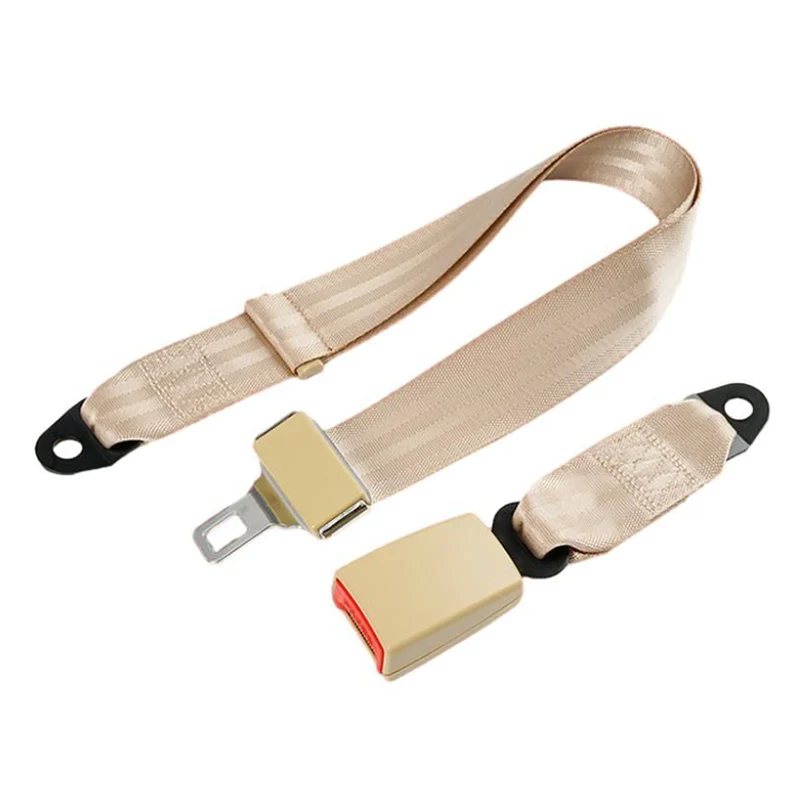Why Seat Belt Essential for Vehicle Safety?
2025-08-19
Seat belts are one of the most crucial safety devices in any vehicle, designed to protect drivers and passengers during sudden stops or collisions. Their importance cannot be overstated, as they significantly reduce the risk of injury or fatality in accidents. Modern seat belts are engineered to provide maximum comfort and safety, utilizing advanced materials and design standards that comply with global automotive regulations.
A seat belt functions by restraining the occupant’s movement, distributing the forces of a collision over the stronger parts of the body, such as the chest, pelvis, and shoulders. This helps to prevent occupants from striking hard surfaces inside the vehicle or being ejected during severe crashes. Over the years, innovations such as pre-tensioners, load limiters, and adjustable straps have enhanced their protective effectiveness while maintaining comfort for everyday use.
Beyond individual safety, using a seat belt also plays a critical role in legal compliance. Most countries have strict laws mandating seat belt usage for drivers and passengers. Non-compliance not only leads to penalties but also increases the risk of serious injuries in accidents. For parents and guardians, seat belts are essential for ensuring child safety, often combined with car seats or booster seats to provide age-appropriate protection.
Advanced Features and Specifications of Modern Seat Belts
Modern seat belts are not just simple straps—they integrate sophisticated engineering to enhance safety, durability, and comfort. Below is a detailed overview of the key specifications and features:
| Feature | Description |
|---|---|
| Material | High-strength polyester webbing resistant to wear, UV, and abrasion |
| Width & Length | Standard width: 45mm–50mm; adjustable length for diverse body types |
| Retractor Mechanism | Automatic locking and emergency locking retractors for safety |
| Load Limiter | Reduces peak forces on the chest during severe collisions |
| Pre-tensioner | Instantly tightens the belt upon impact to minimize occupant movement |
| Buckle Type | Push-button or latch-style for secure fastening and easy release |
| Safety Standards Compliance | Meets FMVSS 209, ECE R16, ISO 6683, and other international standards |
| Color & Design Options | Available in multiple colors to match vehicle interiors |
These specifications are designed to balance safety and comfort. For example, the pre-tensioner system works with the retractor mechanism to ensure the belt tightens instantly during a collision while the load limiter prevents excessive force on the chest. Additionally, high-quality webbing resists fraying, fading, and stretching, ensuring long-term durability.
How to Choose the Right Seat Belt for Your Vehicle
Choosing the right seat belt involves understanding your vehicle type, passenger needs, and safety requirements. Here are four essential considerations:
-
Vehicle Compatibility
Different vehicles require different seat belt lengths and mounting mechanisms. It is crucial to select a seat belt designed specifically for your car, truck, or SUV. -
Safety Ratings and Compliance
Always verify that the seat belt meets recognized safety standards. Look for certifications such as FMVSS 209 or ECE R16, which ensure the product has undergone rigorous testing. -
User Comfort
Adjustable shoulder straps, smooth buckles, and soft yet durable webbing improve comfort for long drives, making regular use more likely. -
Additional Safety Features
Advanced technologies such as pre-tensioners, load limiters, and emergency locking retractors provide superior protection during collisions, making them ideal for family vehicles or high-speed travel.
By following these guidelines, vehicle owners can ensure that their seat belts offer optimal safety and comfort for all passengers.
Frequently Asked Questions About Seat Belts
Q1: How often should seat belts be inspected or replaced?
A1: Seat belts should be inspected regularly for fraying, stretching, or damaged buckles. Any signs of wear require immediate replacement. Generally, after a major collision, seat belts should always be replaced even if no visible damage exists, as internal mechanisms may have been compromised.
Q2: Can aftermarket seat belts provide the same level of safety as OEM belts?
A2: High-quality aftermarket seat belts that comply with safety certifications can offer comparable protection to OEM belts. However, it is crucial to ensure proper installation and verify that the belt matches the vehicle’s mounting points and load requirements.
For those seeking reliable and high-quality seat belts, Chuanghecheng offers a wide range of certified products suitable for various vehicles. Designed with advanced safety features and durable materials, Chuanghecheng seat belts ensure optimal protection for drivers and passengers. To explore our full product lineup or request a personalized solution, please contact us today.





